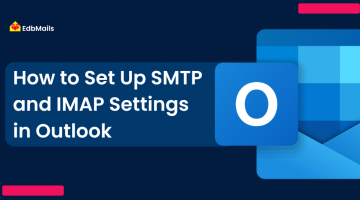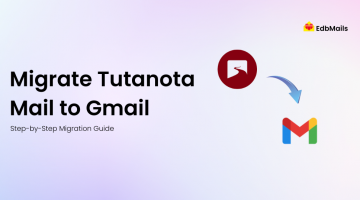Email remains the most critical tool for business communication, and Microsoft Exchange Server has been at the heart of enterprise messaging for more than two decades. Despite the rising adoption of cloud solutions such as Microsoft 365 and Exchange Online, many organizations continue to rely on on-premises Exchange servers because of security, compliance, and control requirements. With the release of Exchange Server 2016, Microsoft introduced a host of new features designed to simplify deployment, enhance collaboration, and support hybrid cloud strategies.
While Exchange 2016 brought a significant improvement over Exchange 2013, moving to this new version is not without challenges. Upgrading an Exchange environment requires careful planning, precise execution, and the right tools to ensure data integrity. This is where EdbMails Exchange Migration and Backup solutions provide unmatched value, enabling businesses to adopt Exchange 2016 with zero downtime and complete security.
The Evolution of Exchange: From 2013 to 2016
Exchange 2013 was already a robust messaging system, but Exchange 2016 took things further by focusing on cloud-readiness and reducing infrastructure complexity. Instead of requiring multiple server roles, Microsoft streamlined the architecture and enhanced features like Outlook on the Web, search capabilities, and compliance tools. This shift reflected Microsoft’s vision of a ‘cloud-first, mobile-first’ world while still giving enterprises the option to run Exchange in their own data centers.
For businesses still running Exchange 2007, 2010, or 2013, upgrading to 2016 provides not only technical benefits but also long-term support and hybrid integration with Office 365. Using EdbMails Exchange Migration tool, organizations can move directly from these older environments to 2016 without complex staged upgrades, saving both time and cost.
A Simplified Architecture for Easier Deployment
One of the most important changes in Exchange 2016 is its simplified architecture. Previous versions of Exchange required three distinct roles: the Client Access Server, the Mailbox Server, and the Edge Transport Server. In Exchange 2016, the Client Access and Mailbox roles are combined into a single Mailbox role, leaving only two roles in the architecture.
This means the Mailbox server not only stores mailbox databases but also handles client connectivity and mail transport, reducing deployment complexity and hardware requirements. The Edge Transport server still exists, but its role is limited to managing secure mail flow between the Exchange organization and the outside world.
This streamlined architecture makes Exchange 2016 easier to manage, but migrating to it from older versions can still be tricky due to data consistency, coexistence issues, and mail flow dependencies. EdbMails ensures that mailbox data, permissions, and configurations move smoothly into this new architecture without disrupting business operations.
Outlook on the Web: A Modern User Experience
Microsoft rebranded Outlook Web App as Outlook on the Web (OWA) in Exchange 2016 and significantly improved its design and functionality. The new interface is cleaner, mobile-responsive, and designed to provide a consistent experience across devices.
Smarter and Faster Search
Search functionality has always been a challenge in large Exchange environments, but Exchange 2016 delivers a much more reliable solution. The new search infrastructure uses content indexing that scales effectively across large mailboxes and databases, providing complete and accurate results faster than before.
Users benefit from helpful suggestions as they type, similar to modern search engines, reducing the time spent looking for emails, contacts, or calendar entries. For enterprises with thousands of mailboxes, this improvement can dramatically boost productivity.
EdbMails ensures that all mailbox data is migrated with indexing intact, so the enhanced search experience works right out of the box in Exchange 2016.
Compliance and Data Protection Enhancements
In today’s regulatory landscape, compliance features are no longer optional. Exchange 2016 introduced several upgrades in this area. In-Place Archiving allows users to store older emails in an archive mailbox, keeping their primary mailbox organized while still making historical data accessible. In-Place eDiscovery enables authorized personnel to search across mailboxes in the entire Exchange organization, which is crucial for legal and auditing purposes.
Data Loss Prevention (DLP) is another key feature. With predefined policies that cover more than 80 types of sensitive information, such as credit card numbers and passwords, organizations can automatically detect and protect confidential data from leaving the network. Exchange 2016 also improved audit logging, making it easier to track who accessed what data and when.
Compliance during migration is equally important. EdbMails uses secure AES-256-bit encryption for all data transfers, ensuring that sensitive business data remains protected during the transition to Exchange 2016.
Improved Collaboration and File Sharing
Exchange 2016 places a strong emphasis on collaboration. It integrates more closely with SharePoint through site mailboxes, which allow users to work with email and documents side by side. Shared mailboxes and public folders continue to support team collaboration, while integration with OneDrive makes it easier to share files without burdening the email server.
Migrating these collaborative structures can be complex, especially when public folders and shared mailboxes are heavily used. EdbMails migration tool is built to handle these scenarios, ensuring that permissions, folder hierarchies, and shared content are preserved exactly as they were.
Protocol Enhancements: MAPI over HTTP
Exchange 2016 introduced MAPI over HTTP as the default protocol for Outlook connectivity. This protocol improves reliability, stability, and recovery compared to the older RPC over HTTP. Users benefit from faster reconnections and better performance, especially on unreliable networks. For compatibility, Exchange 2016 still supports RPC over HTTP, but MAPI over HTTP is now the preferred standard.
Security and Performance Upgrades
Exchange 2016 introduced stronger security measures, including improved TLS encryption for email transport, advanced anti-malware and anti-spam filtering, and stricter role-based access control for administrators. At the same time, performance was significantly optimized, with lower IOPS requirements, larger mailbox support, and faster failover in Database Availability Groups (DAGs).
These changes not only reduce operational costs but also improve reliability and scalability for growing organizations. With EdbMails Exchange Backup, businesses can complement these built-in features by creating secure backups of their mailboxes, ensuring full disaster recovery capabilities in case of unexpected events.
The Role of EdbMails in Exchange 2016 Migration
Upgrading to Exchange 2016 is not just a matter of installing new servers; it requires migrating all existing mailboxes, public folders, archives, and permissions without disrupting users. Manual methods can be slow, error-prone, and risky. EdbMails Exchange Migration tool eliminates these challenges by providing a fast, secure, and automated solution.
EdbMails supports direct migration from Exchange 2007, 2010, and 2013 to 2016 without the need for intermediate upgrades. It allows granular migration, meaning administrators can select specific mailboxes, folders, or even individual items to migrate. The process is encrypted end-to-end, ensuring compliance with industry regulations such as GDPR and HIPAA.
Perhaps most importantly, EdbMails enables zero-downtime migration. Users can continue working without interruption while their data is migrated in the background. Incremental synchronization ensures that once the initial migration is done, only new or changed items are copied, making the final switch seamless.
Supported Migration Scenarios with EdbMails for Exchange 2016
Migrating to Microsoft Exchange 2016 can take many forms depending on the organization’s current environment. Some may be upgrading from older Exchange versions like 2010 or 2013, others may want to move back from Office 365 to on-premises, while some may need to transition from 2016 to 2019 for extended support.
EdbMails supports all possible Exchange 2016 migration scenarios, ensuring that businesses can adopt the path that best fits their infrastructure and compliance needs.
1. Offline EDB to Exchange 2016 Migration
Sometimes organizations only have access to offline Exchange database files (EDB files) due to server crashes, hardware failures, or legacy system decommissioning. In such cases, direct migration via traditional methods is impossible.
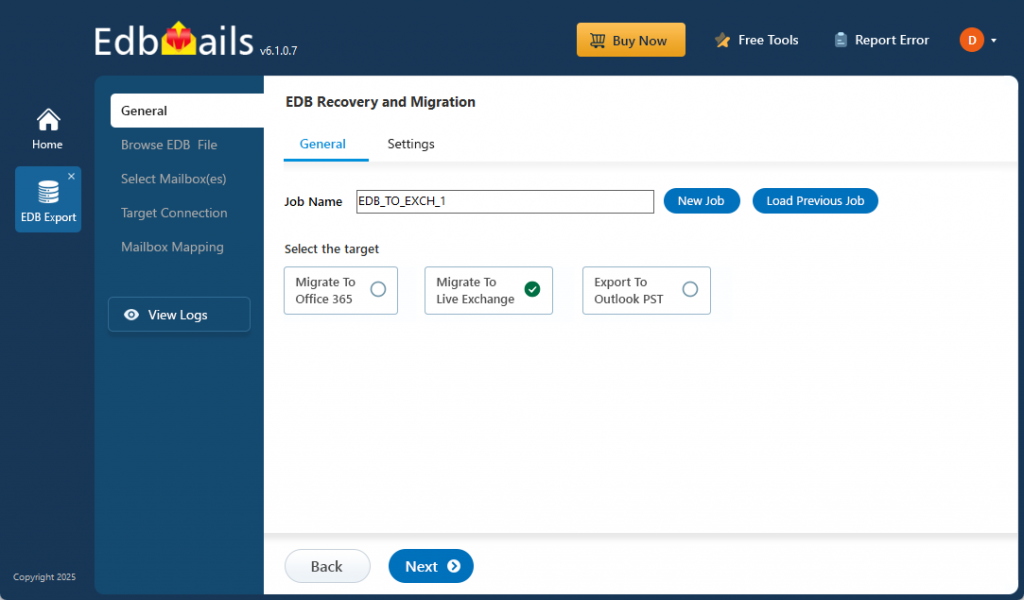
With EdbMails EDB to Exchange Migration, businesses can open offline EDB files and directly migrate mailboxes, public folders, contacts, calendars, and other data into a live Exchange 2016 environment. This bypasses the need for a running source server, saving enormous time and cost during recovery.
👉 EDB to Exchange Migration Guide
2. Exchange 2007 to Exchange 2016 Migration
For many organizations, Exchange Server 2007 was once the backbone of communication and collaboration. But with its end of support long behind us, continuing to run on Exchange 2007 exposes businesses to security vulnerabilities, limited features, and compliance risks. Upgrading to Exchange Server 2016 offers a significant leap forward — from a simplified architecture and improved Outlook on the web, to advanced search and stronger compliance tools.
The challenge, however, is that migrating directly from 2007 to 2016 can be complex without the right approach. This is where EdbMails Exchange Migration becomes indispensable. Unlike traditional manual methods that require staged upgrades, EdbMails enables a direct, one-hop migration from Exchange 2007 to Exchange 2016, moving mailboxes, public folders, contacts, calendars, and permissions without downtime. The result is a smooth, secure, and future-ready transition that helps businesses modernize with confidence.
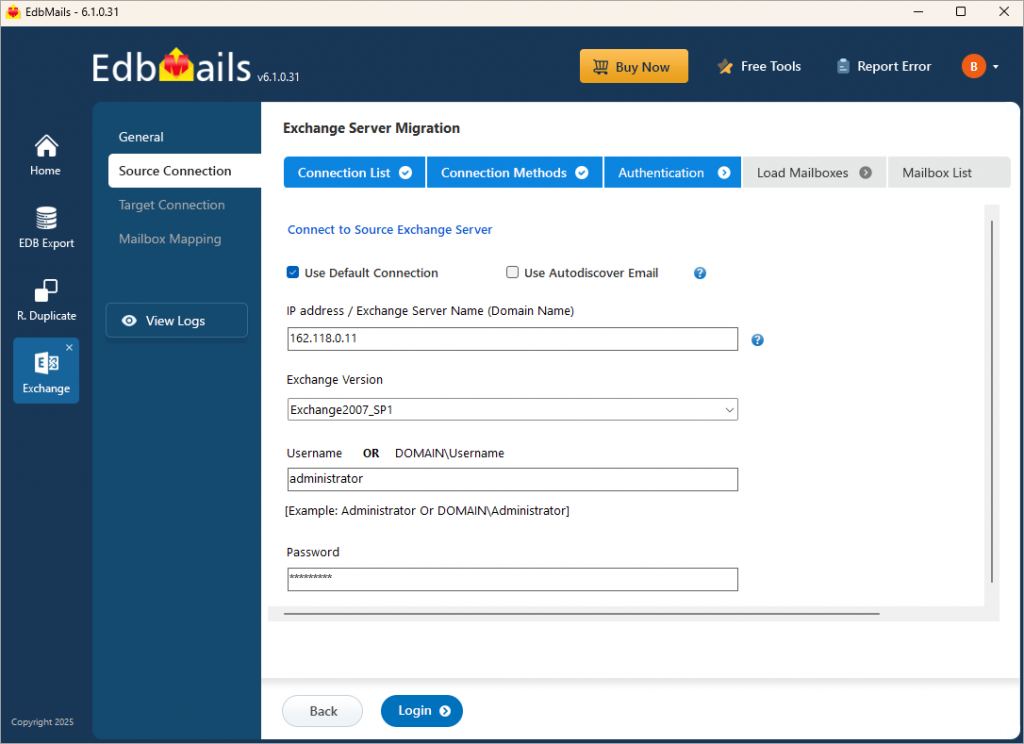
3. Exchange 2010 to Exchange 2016 Migration
Many businesses still rely on Exchange Server 2010, but with its end of support in October 2020, upgrading is no longer optional. Moving directly to Exchange 2016 is the most reliable path, as it provides extended support, hybrid readiness, and compliance improvements.
EdbMails enables direct, step-free migration from Exchange 2010 to 2016, eliminating the need to upgrade first to Exchange 2013. It supports cross-forest and cross-domain environments, preserves folder hierarchy and permissions, and ensures zero downtime for users.
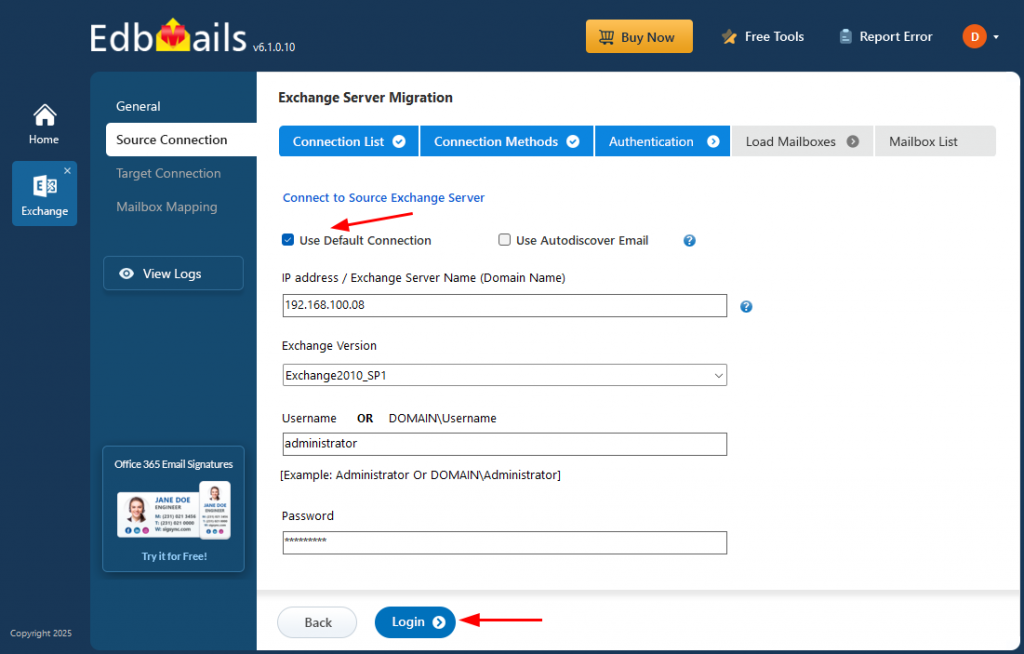
👉Exchange 2010 to 2016 Migration
4. Exchange 2013 to Exchange 2016 Migration
For organizations on Exchange 2013, the move to 2016 is much smoother due to architectural similarities. However, manual migrations can still be time-consuming and risky, especially in enterprises with thousands of mailboxes.
With EdbMails, businesses benefit from incremental migration (only new or changed items are moved after the initial sync), public folder and archive mailbox migration support, and shared mailbox migration. This guarantees a seamless upgrade experience without disrupting users.
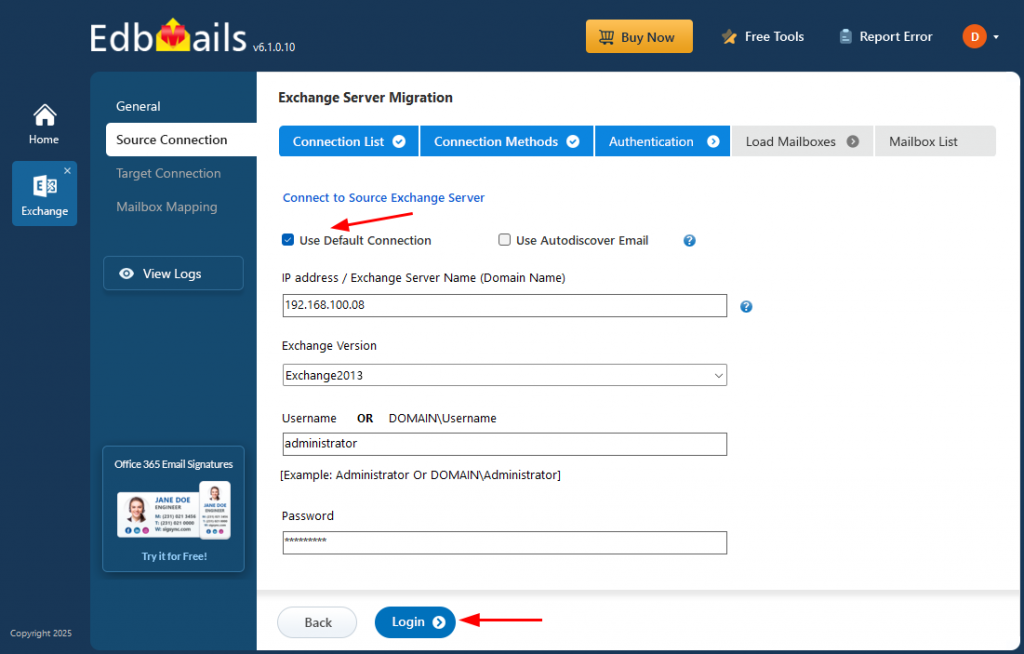
👉Exchange 2013 to 2016 Migration
5. Office 365 to Exchange 2016 Migration
While most migrations are from on-premises to the cloud, some organizations decide to move data back from Office 365 to on-premises Exchange 2016. Common reasons include regulatory compliance, data sovereignty requirements, or cost control.
EdbMails supports direct Office 365 to Exchange 2016 migration, allowing businesses to securely transfer all mailboxes, archives, and shared resources back on-premises. The tool preserves metadata, ensures encryption, and supports staged migration for large enterprises.
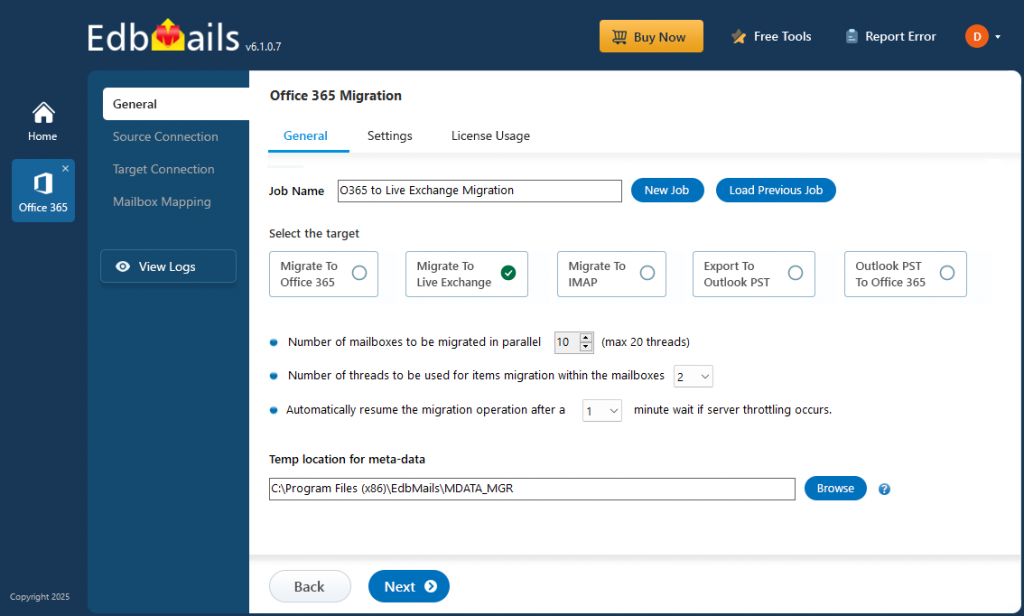
👉Office 365 to Exchange Migration
6. Exchange 2016 to Exchange 2019 Migration
Although Exchange Server 2016 brought many robust features and enhancements, it is now approaching the end of its lifecycle. To ensure long-term support, security, and modernization, organizations are increasingly planning their upgrades to Microsoft Exchange Server 2019.
With EdbMails Exchange Migration Tool, Exchange 2016 to 2019 Migration is simple and reliable. The software enables administrators to directly migrate mailboxes, archives, shared mailboxes, and public folders without downtime or data loss. By preserving folder hierarchy, permissions, and metadata, EdbMails ensures business continuity, regulatory compliance, and alignment with Microsoft’s latest Exchange standards.
👉Exchange 2016 to 2019 Migration Guide
End of Life of Exchange Server 2016
Microsoft has officially announced the end of support for Exchange Server 2016:
- Mainstream support ended on October 13, 2020
- Extended support will end on October 14, 2025
After this date, organizations will no longer receive security patches, bug fixes, or technical support from Microsoft. Running Exchange 2016 beyond its end of life exposes businesses to compliance risks, performance issues, and vulnerabilities.
To stay secure and future-proof, organizations should start planning migrations to Exchange 2019 or Microsoft 365 well in advance. EdbMails simplifies this migration with support for all migration paths, ensuring businesses can modernize without disruption.
👉 Exchange 2016 to 2019 Migration
👉 Exchange 2016 to Office 365 Migration
Conclusion
Microsoft Exchange Server 2016 represents a major step forward in enterprise messaging, with simplified architecture, stronger compliance tools, modern collaboration features, and improved hybrid readiness. However, migrating to Exchange 2016 can be complex and risky if handled manually.
By leveraging EdbMails Exchange Migration and Backup solutions, organizations can ensure a smooth, secure, and efficient transition that protects data integrity, minimizes downtime, and aligns with long-term cloud strategies. Whether you’re moving from Exchange 2007, 2010, or 2013, or planning a hybrid deployment with Office 365, EdbMails provides the tools you need to succeed.
👉 Ready to upgrade? Try EdbMails Exchange Migration Tool today for a hassle-free Exchange 2016 migration.

